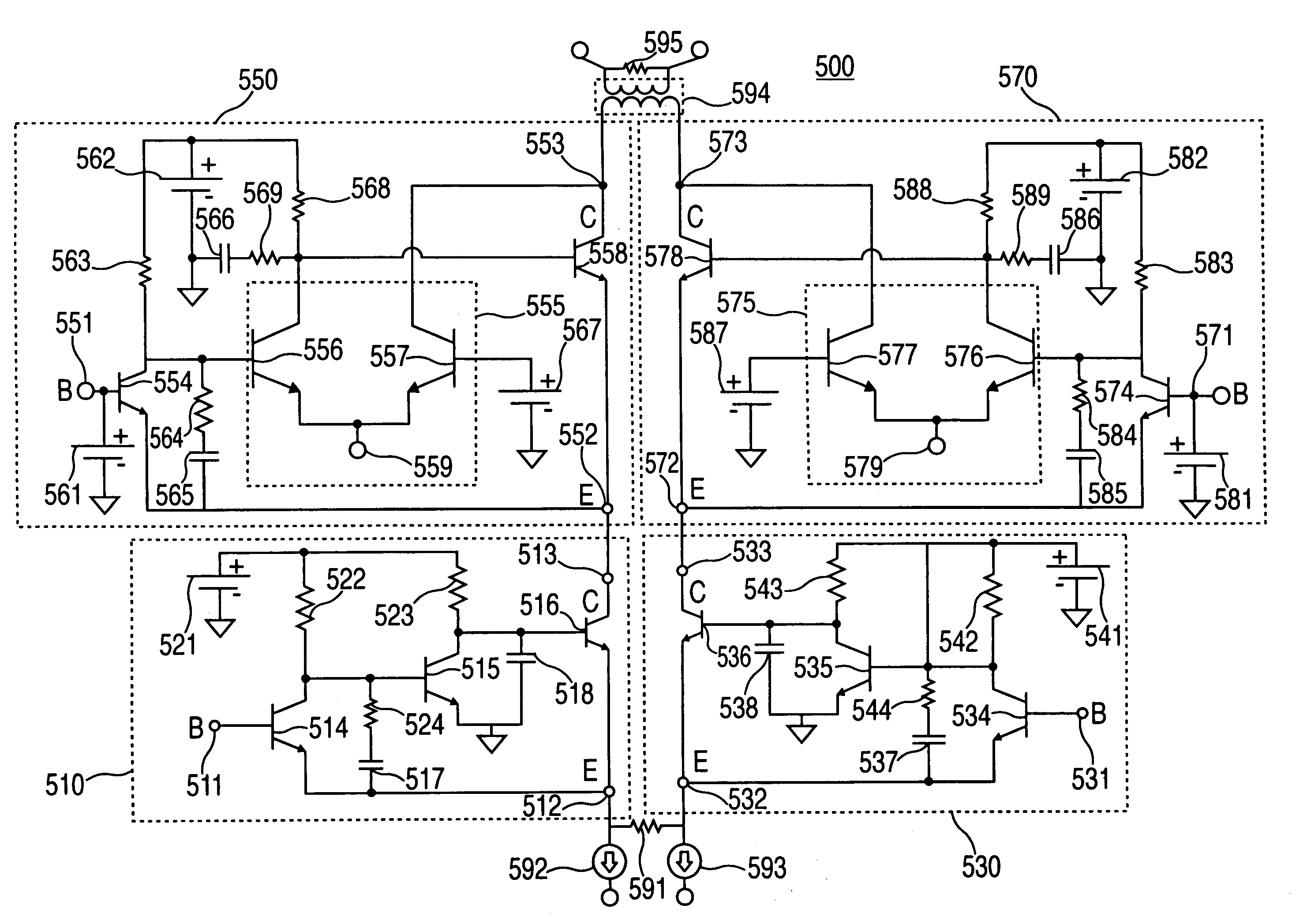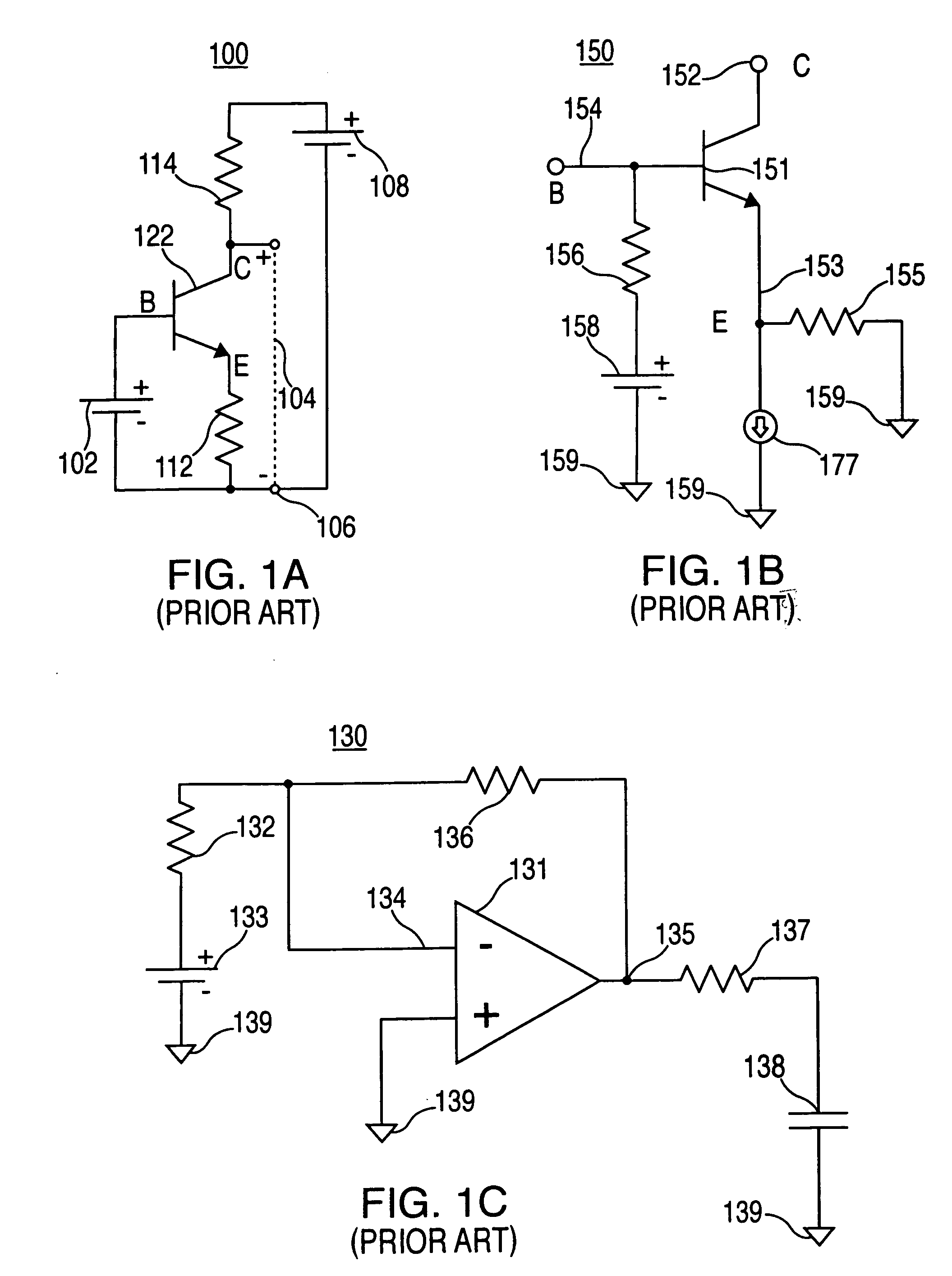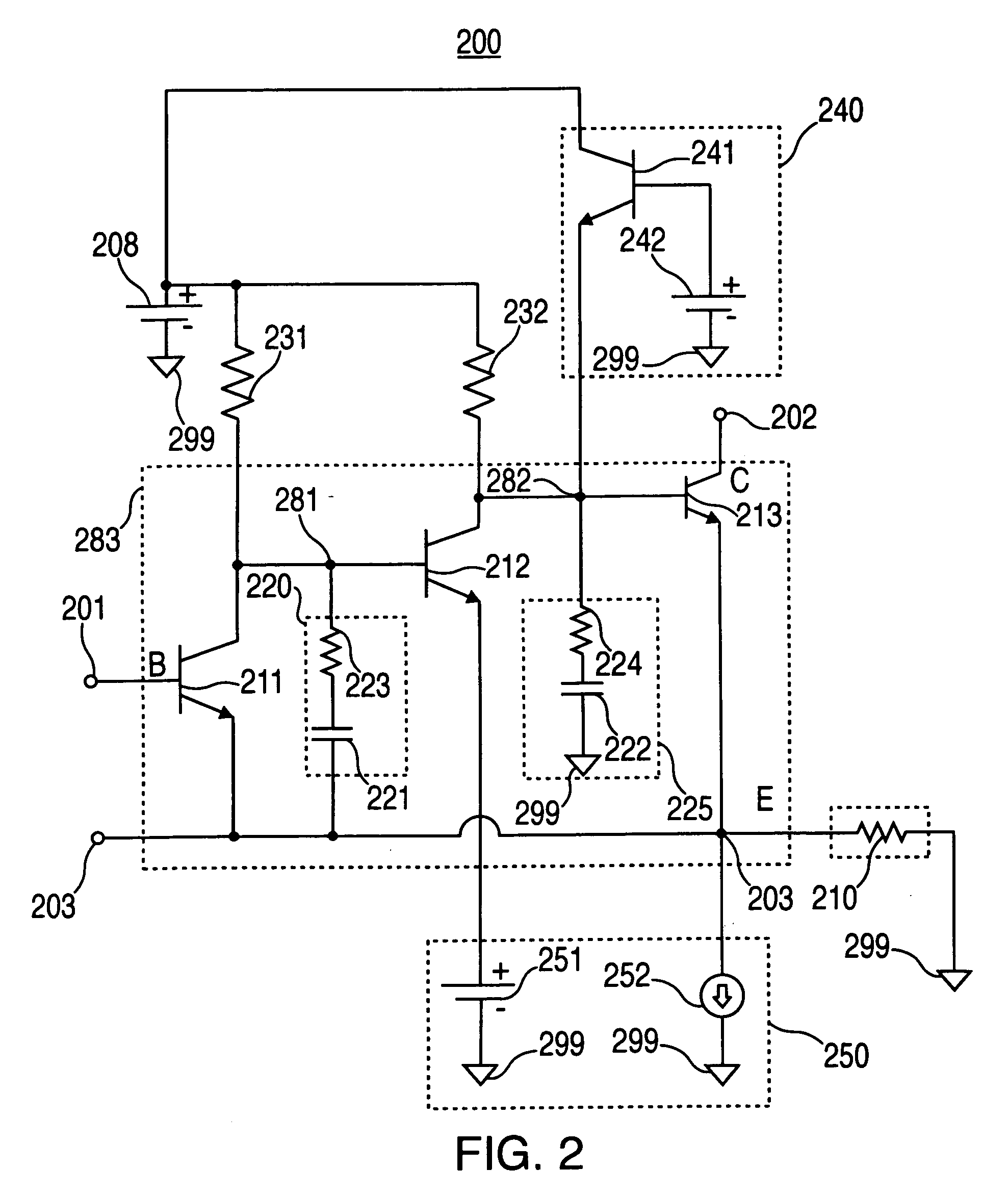High linearity digital variable gain amplifier
a digital variable gain and amplifier technology, applied in the direction of amplifiers with min 3 electrodes or 2 pn junctions, instruments, electric/magnetic computing, etc., can solve the problems of undesirable distortion of the amplified signal, the limited range of frequencies of prior art amplifiers, and the inability to provide linear amplification over a substantial range of circuit conditions, etc., to achieve the effect of increasing the range of input voltage signals, reducing headroom, and high linearity
- Summary
- Abstract
- Description
- Claims
- Application Information
AI Technical Summary
Benefits of technology
Problems solved by technology
Method used
Image
Examples
Embodiment Construction
[0039]FIG. 2 depicts amplifier 200 that is constructed to include enhanced composite NPN transistor 283 that amplifies a voltage signal at input 201 to a current signal at output 202. Amplifier 200 is a compact amplifier structured around a composite NPN transistor that is capable of operating at a very high unity gain frequencies (e.g., frequencies of approximately 1 GHz to 2 GHz).
[0040]One example of applications in which amplifier 200 or composite transistor 283 may be beneficial are in applications operating at intermediate frequencies (e.g., frequencies of approximately 600 MHz to 1 GHz). As will be discussed below, amplifier 200 and composite transistor 283 may be configured in various topologies and modified to optimize, for example, gain, linearity, unity gain frequency, power, transconductance, transresistance, and noise characteristics.
[0041]Enhanced composite transistor 283 preferably includes transistor 211, which defines the base terminal of composite transistor 283 at ...
PUM
 Login to View More
Login to View More Abstract
Description
Claims
Application Information
 Login to View More
Login to View More - R&D
- Intellectual Property
- Life Sciences
- Materials
- Tech Scout
- Unparalleled Data Quality
- Higher Quality Content
- 60% Fewer Hallucinations
Browse by: Latest US Patents, China's latest patents, Technical Efficacy Thesaurus, Application Domain, Technology Topic, Popular Technical Reports.
© 2025 PatSnap. All rights reserved.Legal|Privacy policy|Modern Slavery Act Transparency Statement|Sitemap|About US| Contact US: help@patsnap.com



